Homeowners frequently confuse crabgrass with nutsedge or assume these are the same kind of weed. Nutsedge is often called “nut grass.” This alias can add to homeowners’ confusion about whether nutsedge and crabgrass are the same or related. Crabgrass and nutsedge are not the same kinds of weed. Each of these weeds requires different treatments. To get rid of these weeds effectively, you must first identify them correctly.
How to Identify Nutsedge
Nutsedge is a perennial weed in the sedge family of plants. Even though it looks like grass, it is not a grassy weed. You can identify nutsedge from crabgrass in several ways.
- Nutsedge weeds will grow straight up from the lawn with several darker, green-colored leaf blades.
- Like most weeds, it grows much faster than your turfgrass. Within two to three days of cutting your lawn, the nutsedge will be much taller than the surrounding turfgrass.
- A third way to identify the weed is to take scissors and cut a cross-section of the suspected nutsedge leaf blade. The leaf blade will have a “V” shape on its edge if it is a type of sedge.
Nutsedge
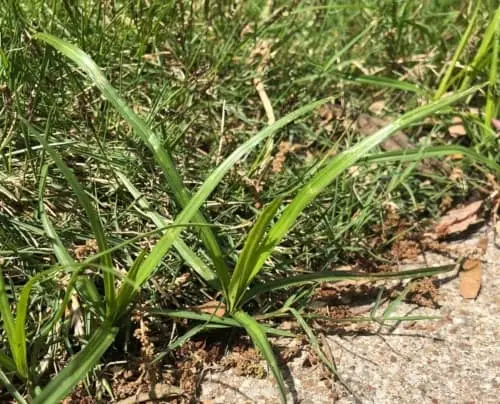
Extensive Nutsedge on a Lawn
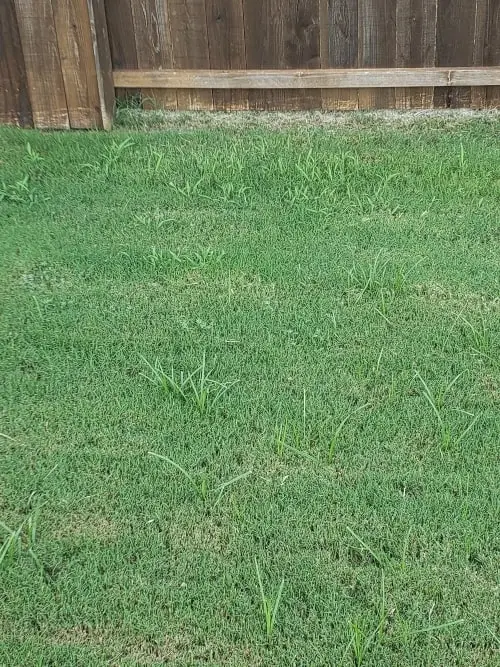
Cross-section of a Nutsedge Leaf Blade with “V” Shape
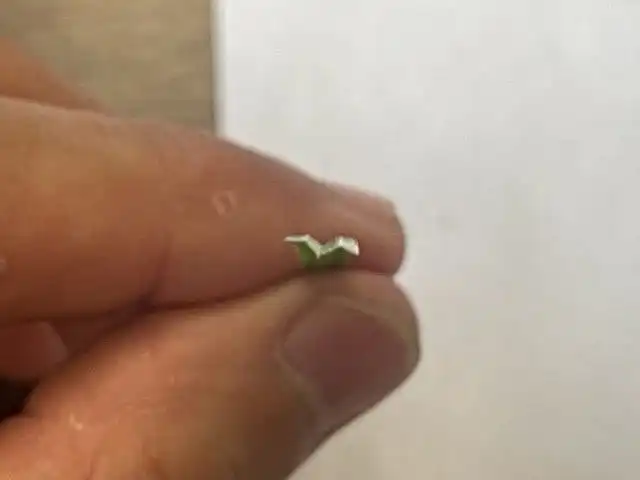
How to Identify Crabgrass
Crabgrass is an annual summer grassy weed. It germinates, grows, spreads seeds and dies all in the same year. Seeds that remain in the soil through the winter will germinate the following spring start the process over again, and spread more crabgrass. This weed can be identified in the following ways.
- This weed somewhat resembles a crab. It grows low to the ground in a circle or oblong formation.
- Unlike nutsedge, this crabgrass has much wide leaf blades. See the picture below.
- Take a pair of scissors and cut a cross-section of the leaf blade. It will have a circular shape on the blade’s end where you cut it versus a “v” shape that will be evident on a cut nutsedge blade.
Crabgrass
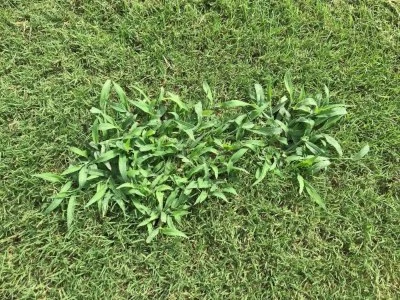
Crabgrass with Curved Leaf Blade on the Cut End
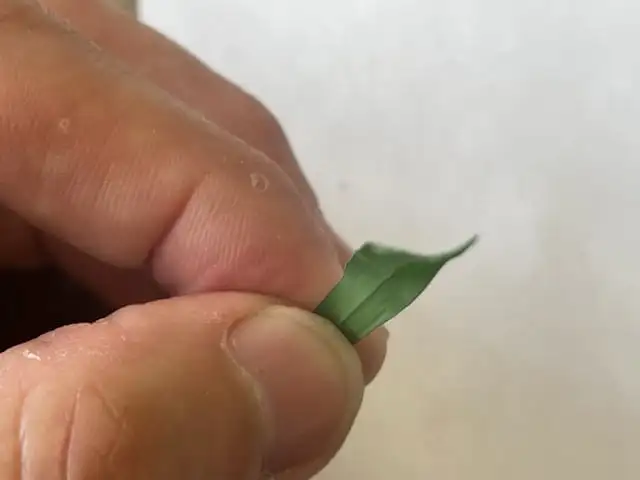
How to Eradicate Nutsedge and Crabgrass
As we have discussed, nutsedge and crabgrass are different types of weeds. As such, they do not use the same form of weed control treatments. They also have different times of the year when weed control treatment is effective.
Nutsedge is a perennial weed and mainly spreads from rhizomes which are underground stems. Do not pull up nutsedge by hand because its root system is hard to remove from our clay-based soils in the Dallas, Fort Worth metroplex. You will likely break it off from the root system with rhizomes. These thin connectors or “runners” will produce more vertical nutsedge weed shoots extending vertically from the lawn. This process is a defense mechanism to help the nutsedge survive.
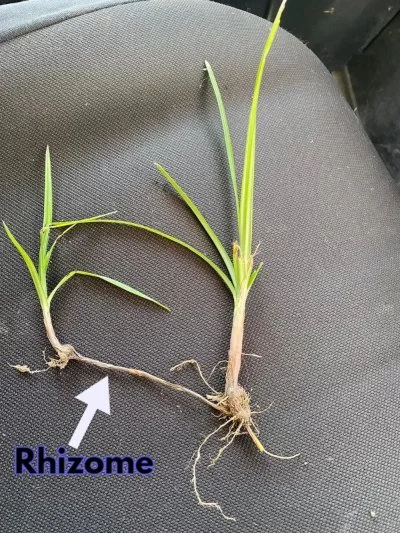
Small amounts of nutsedge that occur in cracks in your sidewalk or driveway can be spot treated with weed killer. However, if nutsedge is prevalent in your yard, it is necessary to blanket spray the weeds with two treatments of a liquid product like Sedgehammer to eradicate them. Nutsedge is best treated in the summer months when the weed is actively growing. The nutsedge will absorb it down to the root system. The treatment targets an enzyme in the plant which will starve it from producing food in the photosynthesis process to eradicate the weed. I may take several years to eliminate nutsedge from your lawn completely. If left untreated, the weed will die off after the first frost, but it will return to your yard in the spring.
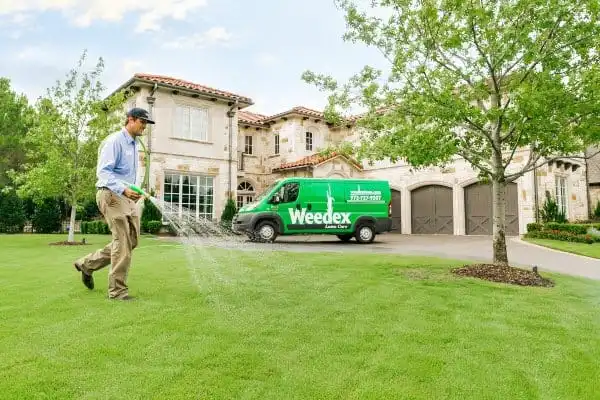
The best way to control crabgrass is through preventive pre-emergent weed control treatments throughout the late winter and early spring. This seasonal timing will treat the crabgrass seeds before they germinate. Crabgrass will begin to germinate in the early spring when the first inch of soil depth reaches temperatures of 57 to 64 degrees. The weed will continue to grow and produce seeds germinating through the late summer. It is tough to treat crabgrass with post-emergent as very few herbicides can eradicate it without damaging the turfgrass. A broadleaf weed herbicide will not eliminate crabgrass since it is not a broadleaf weed.
Whether you have nutsedge, crabgrass, or some other weeds on your lawn, Weedex Lawn Care can help you eradicate them. Our professionals will identify your weeds and treat them at the appropriate time with the right treatments. Weedex provide award-winning service to homeowners in the Dallas-Fort Worth metroplex. For a free estimate, call us at (972) 727-9207 or send us an online quote request.
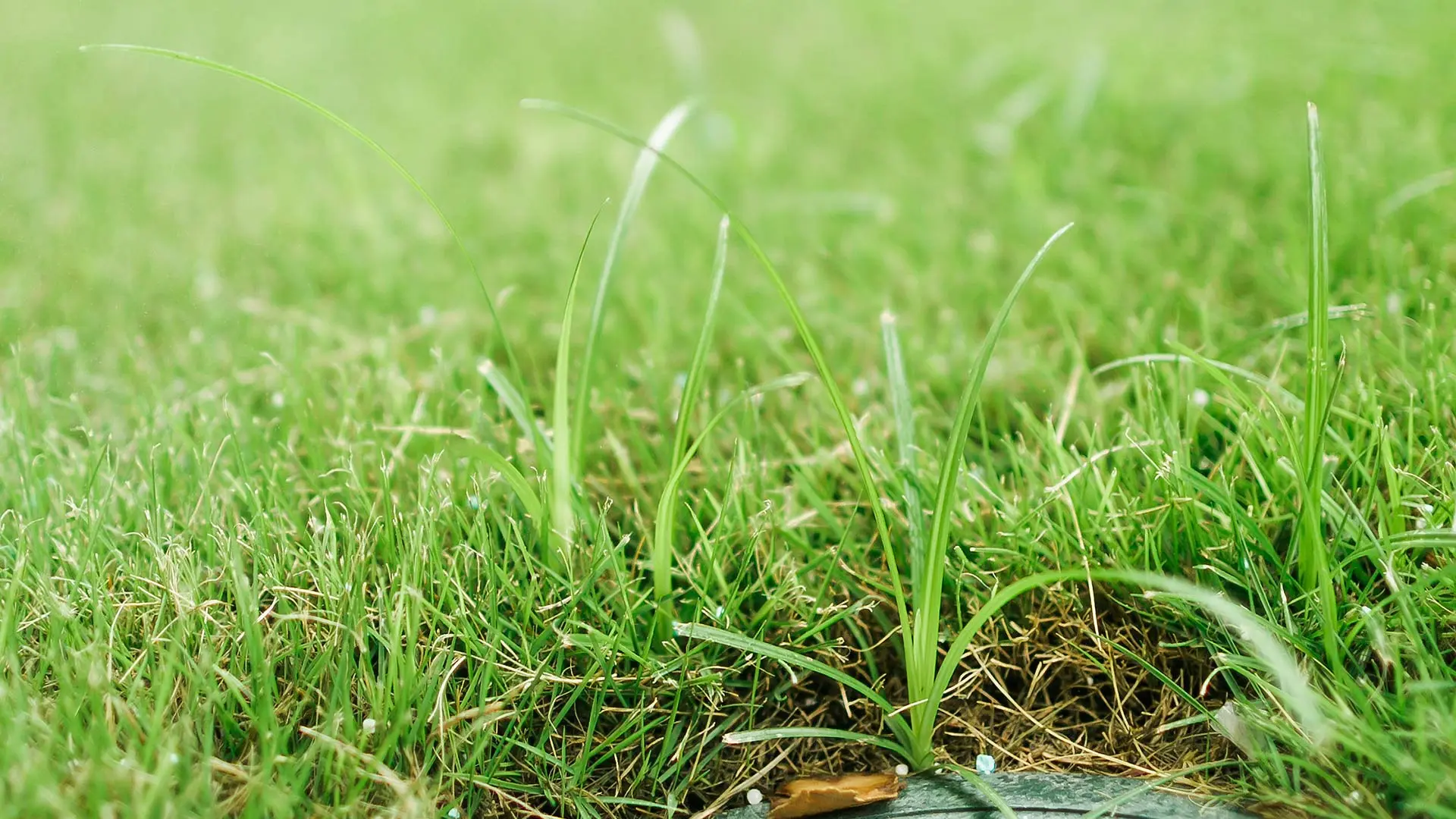

Comments (0)
Thanks for your comment!
Thanks for your feedback! Your comments have been successfully submitted! Please note, all comments require admin approval prior to display.
Error submitting comment!
There is a problem with your comment, please see below and try again.